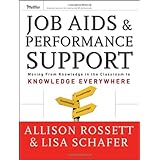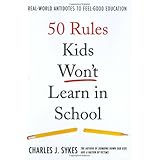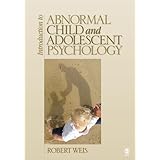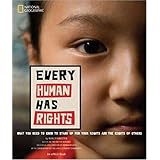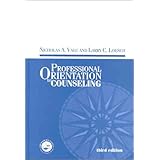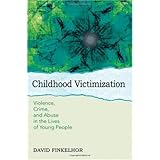
Average Reviews:

(More customer reviews)This is an important book whose goal is to conceptualize a new holistic scholarly enterprise which Finkelhor titles "developmental victimology", a field which encompasses (a) studies of conventional crimes in which children are victims (b) studies of child maltreatment including exploitation of child labor and (c) studies of "acts that would clearly be crimes if committed by adults against adults but which... are generally not of concern to the criminal justice system when they occur among or against children, such as sibling violence and assaults between pre-adolescent peers." Finkelhor has much that is new and interesting to say about sibling abuse and the frequency and severity of physical assault by other children and youth in adolescent and pre-adolescent populations; first and foremost, he argues that there are strong empirical grounds for describing physical altercations among children and youth as a form of victimization.
Finkelhor believes that the fragmentation of scholarship around victimization has led to an inadequate understanding of victimization as experiences which cut across specialized studies of child maltreatment, growing up with domestic violence, bullying, youth violence and other categories of youth victimization. An inadequate understanding of child and youth victimization leads, Finkelhor argues, to inadequate social responses and therapeutic interventions. The strongest feature of Finkelhor's book is his explanation of the "tremendous transitivity among victimization risks." Finkelhor asserts that "the risk for a new victimization is three to six times higher for a child who has been victimized previously. Moreover, it appears that any kind of victimization seems to apply, and no particular kind of victimization is far more predictive than others." Children physically assaulted by a caregiver are far more likely to be physically assaulted by a peer; children who are bullied at school are also more likely to be sexually assaulted, he maintains.
Finkelhor is particularly concerned about the developmental prospects of a group of children and youth whom he describes as "poly-victims", i.e., the subset of child victims who have experienced 4 or more separate victimizations in a year; approximately a third of victimized children, as Finkelhor defines the term, meet the criterion for poly-victim. These children and youth have usually had severe victimization experiences and they are by far the most troubled youth; for example, 86% of clinically depressed children and youth in Finkelhor's large Developmental Victimization Survey were poly-victims. According to Finkelhor, this group of children and youth "show signs that they are locked in a pattern or trapped in a downward spiral ... (of victimization and emotional distress)." For these children and youth, "victimization is more a condition than an event." Finkelhor believes that one of the most important diagnostic challenges facing helping professionals is to accurately identify these children, a task made more difficult, if not impossible, by an exclusive therapeutic focus on child maltreatment or youth violence. Poly-victimization occurs equally among males and females and is more common among older youth, according to Finkelhor. Poly-victimization is associated with family disruption and single parent families - but not with poverty or race - Finkelhor asserts, one of the least plausible arguments in the book given the well established association between and among poverty, child maltreatment and single parent family structure.
The most interesting theoretical sections of this book explore possible pathways to poly-victimization: through dangerous family environments characterized by chronic child maltreatment and frequent domestic violence; through family disruption, homelessness and exposure to predatory persons, through dangerous neighborhoods and risky communities and through enduring personal characteristics of the children and youth themselves. Finkelhor hypothesizes that "Some children, for a variety of reasons, appear to act as magnets for victimization," by virtue of irritating temperaments, disabilities and incapacities and/or social stigma and because of behaviors (related to mental health problems) which invite or trigger retaliation.
Finkelhor proposes a developmental model to explain the differential effects of victimization which includes: a child's appraisal of her / his victimization and its meaning, the application of these appraisals to concrete developmental tasks, coping strategies to deal with the aftermath of victimization and environmental buffers. Utilizing this framework, Finkelhor asserts, "we can analyze victimization developmentally for any child by asking (1) how does this child's stage of development affect his or her appraisal, (2) what developmental tasks are at the forefront that may be most prominently impacted, (3) what developmental vocabulary is the stress most likely to be expressed in, and (4) what environmental reactions are likely for this developmental context." Finkelhor is clearly uncomfortable with trauma as the most common organizing concept for understanding the emotional/ behavioral effects of victimization for an obvious reason, i.e., lots of victimization experiences do not qualify as trauma yet have large developmental impacts. Finkelhor asserts that "the study of developmental victimology needs to be expanded substantially from the approach taken in the PTSD literature." Finkelhor wants a discipline of developmental victimology which explores a broad range of victimizations and their effects, especially pandemic victimizations which occur to a majority of children at some point such as peer assault and sibling abuse. Finkelhor stops just short of picking an argument with trauma experts, but he plainly has a different theoretical perspective than trauma theorists and practitioners.
Finkelhor's most provocative chapter is about peer assault and sibling abuse. He comments that surveys indicate that half of children experience violence at the hands of a sibling and a quarter to a third of children are assaulted by a non-sibling peers within any one year. Finkelhor takes dead aim at the assumption that these incidents are mostly minor developmentally normal "kids stuff". Finkelhor maintains that his study of peer and sibling violence found that children, ages 2-5, were more likely to be injured by other children than older children and that "even low frequency peer violence against younger children was significantly associated with elevated trauma symptoms." In addition, Finkelhor found that sibling violence, while often less serious than peer violence, was more likely to be a chronic condition. "Over half of children under 10 years old hit by a sibling in the previous year had experienced five or more such episodes during that year," Finkelhor claims. One fifth of Finkelhor's sample of younger children (under 10 years of age) experienced chronic sibling victimization, "the level at which ( trauma) symptoms increased." Finkelhor believes that parents and schools should be far less tolerant of physical altercations between children of all ages and that CPS social workers should pay more attention to sibling abuse. This is the part of Finkelhor's book most likely to generate heated reactions and possibly lead to substantial changes in social norms, if heeded, given the level of sibling conflict in American families.
Finkelhor revisits the subject of the 15 year decline in child maltreatment, especially sexual abuse and physical abuse, which he has addressed with careful and penetrating analyses in journal articles; and he remains mystified by scholars' and policy makers' lack of interest in the interpretation of this data. Unfortunately, he does not have much to add to the discussion that he and his colleague, Lisa Jones, have not already said so well in their ground breaking articles on this subject.
Finkelhor closes with an interesting and valuable set of proposals for improving child protective service systems. He comments that "law enforcement has devised a successful formula for the creation of a corps of relatively disciplined, well trained and committed professionals who inspire public confidence, using as raw materials individuals who are not particularly highly educated or well paid... They have done this by giving the corps a distinct persona that its members can identify with. They build loyalty through high standards and rigorous training procedures... The child protection system could move toward this model." Finkelhor also advocates for a broader definition of child protection, a definition which would include parent education, prevention and early intervention. Child protection functions should be "leavened" with community service functions, he believes. Finkelhor sees clearly that an effective child protective service system must have a highly committed and socially valued work force which both enforces community norms around parenting and has a role in creating a better community for vulnerable children. System improvements depend critically on work force development and a dramatically different community reputation for child protection work, Finkelhor maintains.
As in all his work, Finkelhor proceeds in a careful analytical way, sorting through explanations, advancing helpful classification systems and making good use of empirical evidence where it exists. Finkelhor has a way of arguing for controversial ideas and proposals in a way which deflects criticism; he is, nevertheless, a stimulating theorist and policy analyst. I question whether in 10 years there will be many developmental victimologists; but in the meantime, Finkelhor has challenged specialists in a way which will hopefully lead to productive and practically important scholarship.
Click Here to see more reviews about:
Childhood Victimization: Violence, Crime, and Abuse in the Lives of Young People (Interpersonal Violence)Children are the most criminally victimized segment of the population, and a substantial number face multiple, serious "poly-victimizations" during a single year. And despite the fact that the priority emphasis in academic research and government policy has traditionally gone to studying juvenile delinquents, children actually appear before authorities more frequently as victims than as offenders. But at the same time, the media and many advocates have failed to note the good news: rates of sexual abuse, child homicide, and many other forms of victimization declined dramatically after the mid-1990s, and some terribly feared forms of child victimization, like stereotypical stranger abduction, are remarkably uncommon. The considerable ignorance about the realities of child victimization can be chalked up to a field that is fragmented, understudied, and subjected to political demagoguery. In this persuasive book, David Finkelhor presents a comprehensive new vision to encompass the prevention, treatment, and study of juvenile victims, unifying conventional subdivisions like child molestation, child abuse, bullying, and exposure to community violence. Developmental victimology, his term for this integrated perspective, looks at child victimization across childhood's span and yields fascinating insights about how to categorize juvenile victimizations, how to think about risk and impact, and how victimization patterns change over the course of development. The book also provides a valuable new model of society's response to child victimization - what Finkelhor calls the Juvenile Victim Justice System - and a fresh way of thinking about barriers that victims and their families encounter when seeking help. These models will be very useful to anyone seeking to improve the way we try to help child victims. Crimes against children still happen far too often, but by proposing a new framework for thinking about the issue, Childhood Victimization opens a promising door to reducing its frequency and improving the response. Professionals, policymakers, and child advocates will find this paradigm-shifting book to be a valuable addition to their shelves.
 Get 6% OFF
Get 6% OFF
Click here for more information about Childhood Victimization: Violence, Crime, and Abuse in the Lives of Young People (Interpersonal Violence)





